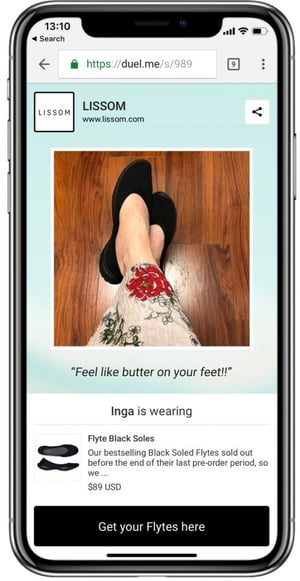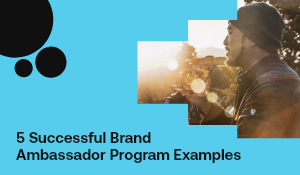Blog
The Value of a Referral
How to understand the ROI of traffic through referrals
Introduction
The Cost-Per-Click from our gorgeous, personalised, shoppable share is significantly higher than the CPC that brands and retailers get from other channels like Facebook, Adwords or Twitter.
 Lissom Shoppable Share
Lissom Shoppable Share
Yet the ROI is many times higher than the ROI of using those platforms.
How can that be true?
Quality of traffic.
The traffic is of a higher quality in terms of the likelihood of conversion and the quality of the customer once converted. This is all a result of the context which the traffic lands, and fit of the referral.
The context of a personal referral (being from a friend or colleague) means that it is a much higher trust channel than any advertising - leading to a natural decrease in consumer skepticism when landing on the page, and therefore a higher likelihood of purchase.
The fit of the referral is due to the friend having information about the person they are referring, using this information to determine customer fit to product better than any personalised advertising.
Let’s examine each of these factors in turn.
High Trust Channel
You would trust your best friend to tell you what looks good on you and you would trust your mother to have your best interest at heart. This is the reason you hold their opinion so highly when recommending products you need. You trust them implicitly. This has objectively been found to be the case too. Nielsen found that customers trust a referral more than any other source, with a large majority of global respondents, 92%, say they completely or somewhat trust the recommendations of friends and family.
The channel is still of high quality even if the referral comes from a less trusted contact, like a colleague or acquaintance. Evidence shows that trust is not just placed in those very close to us, it is also placed in anyone we know who has used the product at all. For example, online reviews and testimony are a large factor in the decision making process between products - 66% of people trust consumer opinions posted online. The referral of a someone like a less good acquaintance, would therefore presumably be between the 66% and 83% mark, much more effective than the 30% who trust advertising.
Fit of the Referral
Some authors suggest that one reason that referrals are more successful is because the referrals are highly targeted based on the knowledge of the referrer to the referee. The people being introduced to the product are there because they already assume they’re going to like what they recieve. This concept leads to higher first time buyer numbers, as human-based personalisation is still far beyond what personalisation can achieve.
Quality of Customer
Presumably as a result of the channels of the referral, the quality of customer referred is also much higher, leading to larger Customer Lifetime Value and ultimately ROI of the click. A study by Wharton and Goethe German Banks states that referred customers have 25% higher profit margins than non-referred customers. This may be because referred customers spend 10-25% more on their initial purchase and make significantly more repeat purchases. Simply, referred customers buy more product more often.
The overall lifetime of a referred customer is also significantly longer; lifetime length is averaged to be 16% higher and these customers are 18% less likely to defect. Since this demographic is around for longer – or possibly forever – their value is almost double of that of a non-referred customer. These customers tend to develop more of a brand loyalty shown by the fact that there is a 37% retention rate from referrals. Creating a continuous cycle of referral builds a similar and loyal customer base to advocate for the brand.
Conclusion
The value of a referral is much higher than a click on a Google Adword or Facebook Ad. This is because of the higher quality of customer landing on the page, leading to a higher profit and ROI. Moreover, while referral systems can be an entire inbound strategy in some cases, they can also be used alongside traditional marketing as an alternative channel. Previously, these two, traditional advertising and referrals, have been shown to work well together.
In conclusion, referrals are higher quality because of the high-trust context of a referral, the fact customers are a better fit (hence more likely to convert) and the fact that these customers seem to be higher quality once converted.
Duel is Customer Advocacy Platform which turns customers into advocates - we automate that lightning-in-a-bottle moment of a friend endorsing a brand. You should probably get a demo booked… (click me!)
If you want to look more at the theoretical background - take an intellectual swim by diving into a Customer Advocacy Marketing Workshop run by our consultancy arm (click me!).
Introvert? Voyeur? Watch Paul give a speech here or sign up for our newsletters to get monthly Customer Advocacy Marketing emails on tips, statistics and the science behind it.


